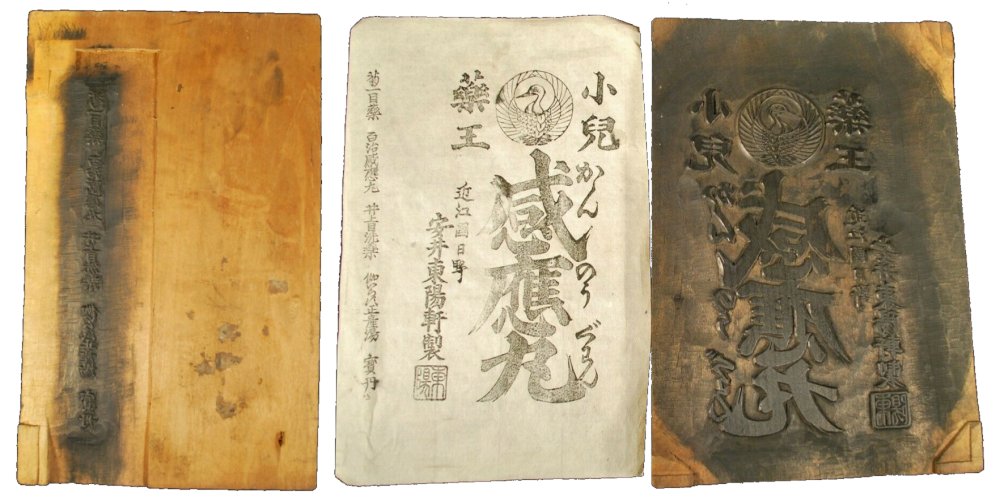 |
||
| |
|
|
 |
||
| Woodblock
and Wodblock Print Click the picture for details. |
Woodcut is a relief printing process in which a wooden printing block in relief is used to create graphics; The individual graphic created in this way is also called a woodcut. Woodcuts Prints, in which different woodcut plates are used for different colors, and thus several colors can be seen on the finished print, are called color woodcuts.
To produce the printing block, the non-printing parts are removed from a smoothly planed wooden board with cutting knives and other carving tools and the raised parts are then colored and printed (high pressure). The image must of course be carved mirror-inverted. The impression is made by rubbing the applied paper with the ball of the hand, a brush or other suitable tool.
Wood printing is a further development of stone printing, which was already known in China over 1500 years ago for stone rub-offs. The first wood block prints were made in the early Southern Song (南朝宋, 420–479 CE) period.
The art of woodblock printing had been introduced from China along with Buddhism and paper-making to Japan for the first time in the Asuka period (592-710). At first, it was mainly used to produce Buddhist scriptures and Chinese literature books. However, the improvement of woodblock printing in the Edo period had increased its usage in various genres of books, especially for popular fiction books.
The classical Japanese woodblock printing process had allotted three roles. A painter (E Shi:絵師) drew the sketch, then the Carver (Hori Shi:彫り師) carves the woodblock, and the Printer (Suri Shi:摺師) colored the block and prints on the paper.
A 'hangi' (版木, はんぎ is a wooblock plate (see above picture) to be used to carve the reversed and mirrored picture of a text or a painting for printing processes. Best results are achieved when using cherry-tree wood or mulberry-tree wood.. Texture, and grain pores, ease of carving, ability of colour absorption, ability to deliver colour, everything influences the choice of wood type. Due to its high resin content, coniferous wood types are generally unusable for wood block printing.
Copyright 2008 ff: Hans P. Boehme